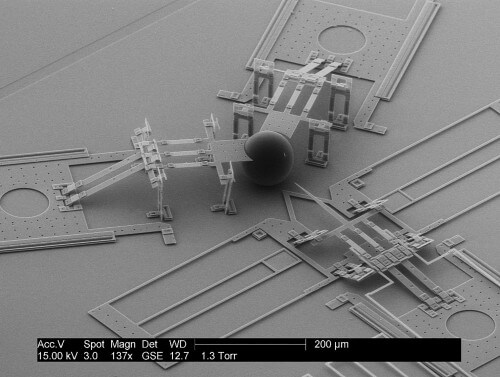The ability to transfer gene sequences or DNA from one organism to the genome of another organism plays a vital role in the medical research of diseases such as cancer, Alzheimer's disease and diabetes.

The ability to transfer gene sequences or DNA from one organism to the genome of another organism plays a vital role in the medical research of diseases such as cancer, Alzheimer's disease and diabetes.
Today, the most common method of introducing genetic material into a new cell - microinjection - has a significant drawback - in this method, a hollow needle is used to inject a liquid full of DNA into the cell nuclei of an egg, but the unnecessary liquid causes the cell to swell and die in 40 % of cases.
Now, an interdisciplinary team of scientists from Brigham Young University (BYU) in the US has developed a way to significantly reduce the mortality rate during the insertion of DNA into the egg. The researchers created a microscopic injection device that injects the DNA into the cells using electrical forces.
"Since DNA is a naturally negatively charged material, it is attracted to the exterior of our new device that is composed of a positive charge," explains Brian Jensen, a professor of mechanical engineering at the university. "As soon as we insert the device into the cell, we simply reverse the polarization of the electric field and the device itself flows the filler material (DNA or other biological sequence) into the interior of the cell."
Thanks to the fact that the device is ten times smaller than existing devices and that no unnecessary liquid is used, the cells experience much less pressure compared to the usual microinjection process, and therefore, have much higher survival rates. The researchers describe their "metamorphic nanoinjection" process in an article published in the scientific journal Review of Scientific Instruments.
Now, the researchers are using the method to inject DNA into zygotes (fertilized eggs) of mice. "Microinjection technology has not really advanced over the last 50 years since its invention," says the lead researcher. "Removing the need to inject the required material under pressure into the cell nucleus while switching to the new device is a great advantage. Not only does the new process improve the survival rate of the cell, but it causes less damage in terms of the future development of the cell."
In a recent article published in the scientific journal Transgenic Research, the team found that 77.6% of the fertilized eggs injected with nanoinjection developed into a two-celled egg compared to 54.7% with the microinjection method. The main purpose of creating transgenic plants is to study genetic or infectious diseases. By altering the genes of the mouse so that it expresses human diseases, researchers can gather insightful information regarding future treatments and cures against these diseases.
One of the most important findings of the researchers was that it is possible to use electrical forces in order to insert the DNA into the nuclei of the cell without pressing the device into the pronucleus (the cellular structure that contains the cellular DNA). This means that the injection can be performed even in women with opaque or cloudy embryos. "This type of animal, including many important animals such as pigs, will be of great value for a variety of transgenic technologies," adds the researcher. "We believe that our new nanoinjection method will pave the way for new areas of research in this kind of research."

One response
It seems that technology can be used for cloning, maybe Dolly the sheep would have lived longer? As for cloning mammoths, or other animals?